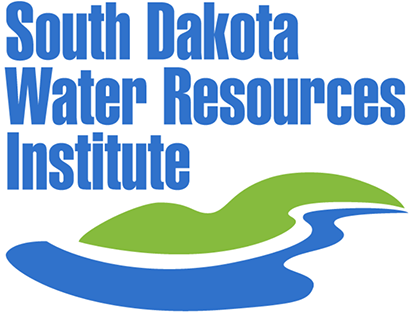Document Type
Data set
Publication Date
2020
Abstract
This data collection contains the following contains the following files:
- Informational text file (main download file)
- Cumulative Data Hartford, SD: Flow Calculations
- Cumulative Data Hartford, SD: Weather
- Cumulative Data Hartford, SD: Nitrate reduction
- Hartford, SD Aerial Image
- Hartford, SD Bioreactor Design
There is a critical need to develop additional practices for reducing nitratenitrogen load deposition through tile drainage systems in the Mississippi River Basin and ultimately achieving the target of reducing the hypoxic zone in the Gulf of Mexico. Denitrifying woodchip bioreactors are one example of a method to remove nitratenitrogen from the drainage water. A bench top experiment was conducted to develop the following flow equation for the V-notch weir used in the study to estimate flow rates: Q=1.7406 H 1.9531, where Q is flow rate (l/min), and H is thickness in cm of the nappe flowing over the V notch. An economic analysis showed that the annualized installation costs for the three bioreactors were between $60 and $76 per hectare of effective drained area. The cost to remove one unit mass of nitrate-nitrogen was calculated for one of the bioreactors only due to monitoring equipment failure or lack of flow at the two others. It was approximately $8.68 per Kg N removal. The average concentration-based nitrate removal at both the Baltic and Montrose bioreactors were 81% and 51%, respectively during 2013. At the Montrose bioreactor, the average removal rate of nitrate nitrogen in calculated for the entire volume of woodchips (wetted and unwetted) was 0.98 g N /m3 per day. The nitrate-nitrogen removal rate calculated for the volume of wetted woodchips for the Montrose bioreactor was estimated as 12.58 g N/m3/d. The performance of three bioreactors was determined by the nitrate-nitrogen removal rate and cost per pound of nitrate-nitrogen removed by the bioreactors. The average concentration-based nitrate removal at both the Baltic and Montrose bioreactors were 81% and 51%, respectively during 2013. At the Montrose bioreactor, the average removal rate of nitrate-nitrogen in calculated for the entire volume of woodchips (wetted and unwetted) was 0.98 g N /m3 per day. The nitrate-nitrogen removal rate calculated for the volume of wetted woodchips for the Montrose bioreactor was estimated as 12.58 g N/m3/d. The objectives of this study and evaluate the effectiveness of woodchip bioreactors in removing nitrate-N from subsurface drainage water. Four woodchip bioreactors were installed and monitored between 2012 and 2016 near Arlington, Baltic, Hartford and Montrose in eastern South Dakota. One P adsorption structure was designed, installed and monitored for 2016 near Baltic, South Dakota downstream of the Baltic bioreactor. Results showed that nitrate-N reductions ranged from 7% to 100% for the four bioreactors, based on upstream concentrations of 0.79 to 60.9 mg/L during 2014-2016 study period. Nitrate-N load removal rates varied between 0.01 to 14.6 gm N/m3/day, with upstream and downstream loads of 0.03 to 116 kg/ha/year and 0.0 to 91 kg/ha/year, respectively. The average cost of nitrate removed were estimated to be $11, $20, $13, and $61 kg/N per year for the Arlington, Baltic, Hartford, and Montrose.
Publisher
South Dakota State University
Recommended Citation
McDaniel, Rachel; Ahiablame, Laurent; Thapoa, Utsay; Partheeban, Cynthuja; and Kjaersgaard, Jeppe, "Evaluation of Woodchip Bioreactors and Nutrient Reduction" (2020). South Dakota Water Resources Institute Datasets. 1.
https://openprairie.sdstate.edu/sdwri_data/1
Hartford Flow Calculations
cumulative hartford weather.xlsx (4918 kB)
Hartford Weather Data
cumulative-hartford-nitratereduction.xlsx (18 kB)
Hartford Nitrate Reduction
Hartford-aerial image.png (2021 kB)
Hartford Aerial Image
HartfordBioreactorDesign.xlsx (95 kB)
Hartford Bioreactor Design


Comments
Funded through the USGA and the South Dakota Soybean Council.